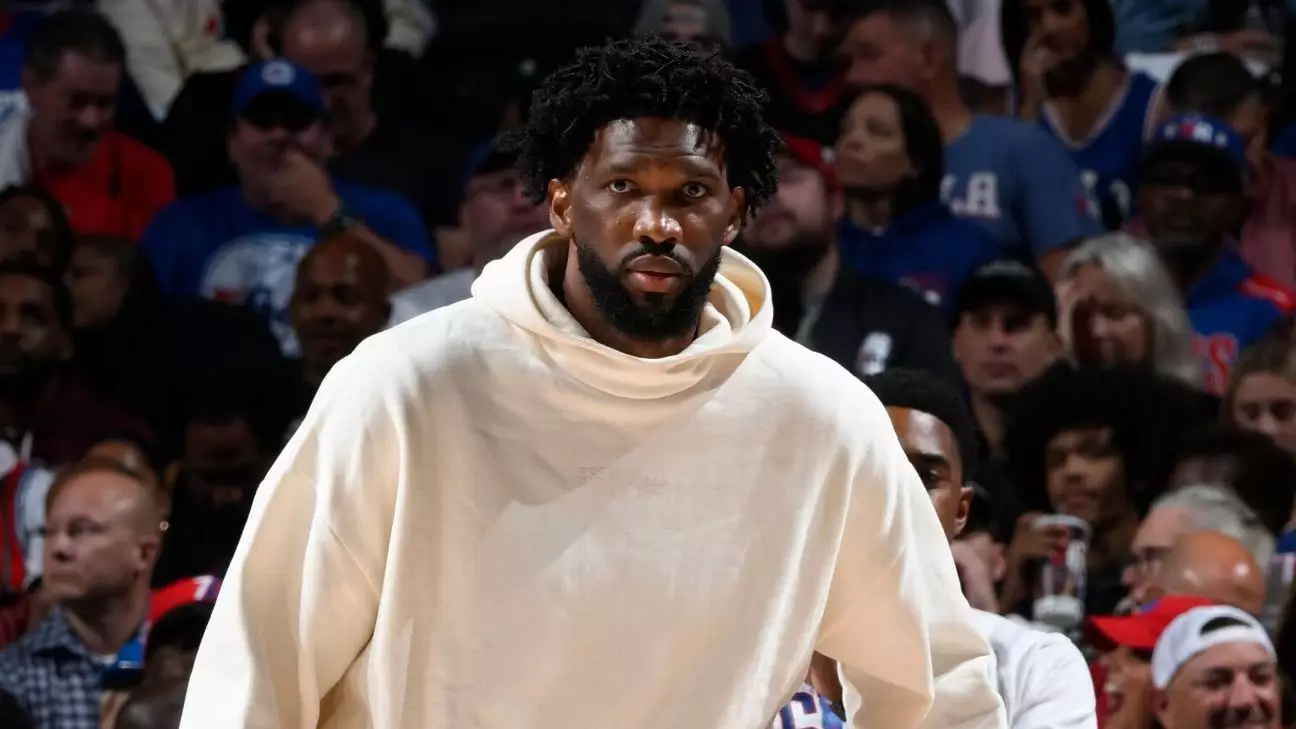Understanding the Tensions: Embiid’s Locker Room Incident and Its Implications
It was a regular evening for NBA fans, but for Philadelphia 76ers star Joel Embiid, it was anything but typical. After a tough game against the Memphis Grizzlies, Embiid found himself in the middle of a heated confrontation with local columnist Marcus Hayes. This incident has stirred up quite a conversation, not just about Embiid’s temperament, but also about the often fraught relationship between athletes and the media. As both sides grapple with scrutiny during a challenging season, we’re left to ponder the pressures athletes face and how personal stories can shape public perception.
The locker room was charged with emotion after the 76ers’ 124-107 defeat. Reports suggest that tensions peaked when Embiid confronted Hayes over a controversial column. The piece touched on sensitive topics like Embiid’s late brother and his son—subjects Embiid felt were inappropriate to discuss in relation to his performance on the court. The intensity of Embiid’s reaction, marked by direct threats and profanity, highlights how fiercely athletes protect their personal lives from public scrutiny.
This incident wasn’t just verbal; it allegedly turned physical when Embiid reportedly shoved Hayes. Such actions underscore the delicate balance between players and journalists—a boundary often maintained by mutual respect for privacy and understanding the consequences of intense public examination.
Key Takeaways
- Embiid’s confrontation with journalist Marcus Hayes raises questions about athlete-media relationships.
- The incident highlights the pressures professional athletes face and their need for privacy.
- Embiid’s ongoing injury struggles compound his emotional response to public criticism.
Repercussions and Reactions
The NBA quickly took notice of this altercation, with spokespersons announcing an investigation. This response underscores the seriousness with which such incidents are taken, serving as a reminder of the professional decorum expected within sports environments. Daryl Morey, president of basketball operations for the 76ers, emphasized the team’s commitment to thoroughly addressing this situation. It reflects the responsibilities organizations have to resolve conflicts and uphold professionalism.
Embiid’s reaction points to a broader frustration many athletes feel about media narratives. Despite claiming indifference to reporters’ opinions, there’s an unspoken truth: public perception can deeply impact an athlete’s career and legacy. This highlights a disconnect between athletes’ desire for personal autonomy and the reality of being public figures under constant scrutiny.
Adding complexity to this narrative is Embiid’s ongoing battle with injuries that have kept him off the court for significant stretches. Managing a knee injury has intensified his emotional state, compounded by past experiences with injuries requiring surgery and prolonged recovery. His comments about wanting to play despite these setbacks reveal his competitive spirit and illuminate how societal expectations can complicate an athlete’s recovery process.

The Human Side of Professional Sports
In discussing professionalism and effort, it’s crucial not to overlook the intricate landscape of an athlete’s physical and mental health. Embiid’s frustration transcends his performance; it’s about being understood and respected as he maneuvers through media representation challenges alongside personal hardships. This incident between Embiid and Hayes reminds us of the complexities in athlete-media relationships, underscoring the need for empathy from both sides.
Athletes regularly share parts of their lives publicly while striving to maintain dignity and protect their personal histories. As the 76ers navigate a season without their star player, it’s crucial for us as spectators to see beyond the jersey—to recognize an individual battling not only opponents on the court but also managing expectations and personal trials off it. Each headline or column carries responsibility; fostering compassionate dialogue bridges performance critique with human realities.
Final Thoughts
This incident serves as a wake-up call for everyone involved in sports—from athletes to fans to journalists—to engage more thoughtfully with one another. Empathy should be at the heart of every interaction, recognizing that athletes are human beings first. As you reflect on this story, consider how we can all contribute to creating a more supportive space where athletes can perform freely without fearing judgment on their personal lives. Remember, every game played reveals more than just skills—it narrates a human journey filled with triumphs and trials.
Joel Embiid
athlete-media relations
NBA
personal narratives
sports journalism


Leave a Reply